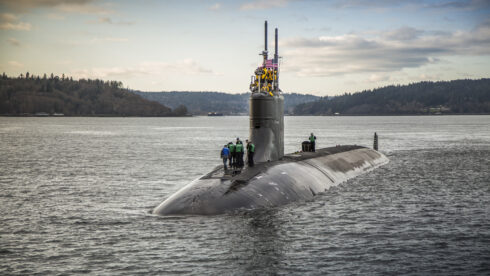Written by Dr. Binoy Kampmark
Never trust anything that comes out of a politician’s mouth in an election year. Pledges are made to be broken; promises are made to seduce, not convince. When the subject matter involves fictional submarines, even greater care should be taken.
The prolonged, costly nightmare of Australia’s submarine policy took another turn on March 6. The Defence Minister Peter Dutton could barely contain his excitement with the announcement that the Morrison government would soon be unveiling which nuclear-powered submarines it would acquire. “We will have an announcement within the next couple of months about which boat we are going with, what we can do in the interim.”
To the ABC’s Insiders program, Dutton oozed unsubstantiated hope. “Both the US and UK understand the timelines, they understand what is happening in the Indo-Pacific, and they are very, very willing partners.” The minister was even willing to wager that the submarines would be operational before 2040, when his career and those of his colleagues will be confined to the dust of history. “We are going to acquire the capability much sooner than that.”
The Labor Opposition defence spokesman, Brendan O’Connor, found the details thin and the secretive conduct of the government questionable. “Despite claiming they would keep Labor updated, we haven’t had a single update from the Morrison government on this strategically important decision which is, quite frankly, appalling.” He demanded a furnishing of “a detailed plan in the national interest […] as to how it will rectify delayed and over-budget defence contracts.”
The original understanding was that the government would spend some 18 months examining its options on how best to deliver technology it has never had, nor had any aptitude or expertise in. But we are in an election year, and timelines wax and wane with elastic will.
To this is an added frisson: the war in Ukraine and Beijing’s own foreign policy. In advanced notes given to media outlets on Prime Minister Scott Morrison’s speech to the Lowy Institute, a dark vision is conjured up. “A new arc of autocracy is instinctively aligning to challenge and reset the world in their own image.” That image seems strikingly one Morrison himself resembles: “the spectre of a transactional world, devoid of principle, accountability and transparency”.
All this suggests a hurrying up that has little basis to it. Morrison has, for instance, promised “more than $10 billion to meet the facilities and infrastructure requirements” for the move to the nuclear-powered submarines. The effect of this promised splash remains to be seen, given the absence of Australian skills, which will have to be made up in US-UK training, and the total absence of any facility to host, let alone build nuclear powered submarines.
Nothing to fuss over. Australia’s burghers are assured that this will be rectified by the construction of a new base at either Brisbane, Newcastle or Port Kembla (minds remain indecisively woolly on the subject of location) which will “enable the regular visiting of US and UK nuclear-powered submarines.”
These arrangements are being pursued as part of the AUKUS security pact, announced last September to much fanfare and controversy – at least to those in Paris. While it advertised to the world that Anglosphere nostalgia lingers with corrupting influence, it left the government of Emmanuel Macron seething.
The AUKUS agreement effectively scuppered France’s own submarine contract via the Naval Group with the Australian government. The original agreement to build 12 diesel powered attack class submarines, valued at AU$90 billion caused moments of salivation in Paris. French military industry would, or so it was thought, be raking in the cash and prestige.
But even before its termination, the doomed contract already looked like submerging without a trace. There were the predictable delays. There were questions about when the submarines would be operational, by which time they would be obsolete. Then came squabbles over the intellectual content of the project, which was, primarily speaking, a French rather than Australian matter.
For Beijing, AUKUS merely confirmed suspicions that Washington, Canberra and London were keen on encircling a boisterous rival in the Indo-Pacific. As Professor Li Haidong of the Institute of International Relations of China Foreign Affairs University put it, “The US is using the same approach employed to contain Russia in Europe after the Cold War to contain China in the Asia-Pacific region.” To that end, the United States was “building a NATO-like alliance in the region, with AUKUS at its core, and the US-Japan and US-South Korea alliances surrounding it”.
The AUKUS alliance continues Australia’s idiosyncratically disturbed approach to submarine policy. The mutilated French design was a monster without teeth: a nuclear blueprint with its nuclear propulsion removed in favour of diesel power. The AUKUS proposal is not much better, being yet another mangle that contemplates the expenditure of AU$116 billion on a fleet of eight submarines. In whatever form it takes – and the question is serious enough – the submarine in question will have nuclear propulsion without nuclear weapons, a situation manifestly absurd and unlikely to last long.
The balance sheet of this enterprise is a poor one, and risks becoming more wretched. Tangibly, AUKUS has shown Australia diplomacy to be subservient and shoddy, alienating its European Indo-Pacific ally while also being laughed at by the United States. (President Joe Biden showed much contrition to Emmanuel Macron by suggesting, disingenuously, that the Australians should have told France earlier.)
Even if these plans firm up in time for electoral exploitation, it will not clarify when these beasts of the sea will actually emerge from the cocoon of the imagination. In decades, the armchair strategists and naval cocktail circuit will be feasting over other prototypes and ways to burn money from the public purse. The Australian nuclear-powered submarine will be a comical relic, the butt of many a joke.
Dr. Binoy Kampmark was a Commonwealth Scholar at Selwyn College, Cambridge. He currently lectures at RMIT University. Email: bkampmark@gmail.com




